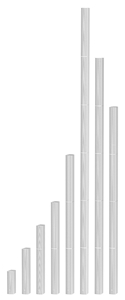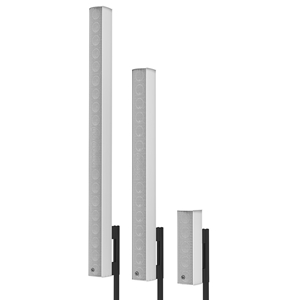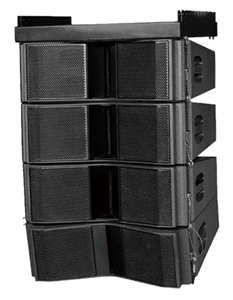-
Products
-
Loudspeakers
- Atlas+Fyne IsoFlare™ Loudspeakers
- SHS Series
- In-Ceiling
- Surface Mount
- Pendent Mount Speakers
- IP Speakers
- Sound Masking Speakers
- Subwoofers
- Line Columns & Arrays
-
Speaker Components
- Speaker Drivers
- Transformers
-
Baffles & Back Boxes
- Blind Mount Enclosures
- EZ Mount Enclosures
- General Purpose Baffles
- Vandal Proof
- Q series
- Q Series - Square
- Recessed
- Torsion Baffles & Enclosures
- Cylindrical
- General Purpose Baffles - Square
- Recessed - Square
- Surface Mount Enclosures - Square
- Fire Rated
- 8" Speaker & Analog Clock
- Surface Mount Enclosures
- Mounting Rails
- Mounting Rings & Squares
- T Bar Bridge
- Portable Speakers
- Specialty Speakers
- Life Safety
- Horns
- Sound Masking
- Amplifiers
- GLOBALCOM® Enterprise Communication Ecosystem
- 5400 Series Life Safety Public Address System
- IP Solutions
- DSP / Signal Processors
- AC Power Distribution
- Racks and Cabinets
- Microphone & Mic Stands
- Audio Accessories & Options
- Dante® Enabled Devices
- Buy America Act - Trade Agreements Act
- Discontinued Product
-
Loudspeakers
- Systems
- Markets
- Support
- Resources
- About Us
-
Products
-
Loudspeakers
- Atlas+Fyne IsoFlare™ Loudspeakers
- SHS Series
- In-Ceiling
- Surface Mount
- Pendent Mount Speakers
- IP Speakers
- Sound Masking Speakers
- Subwoofers
- Line Columns & Arrays
-
Speaker Components
- Speaker Drivers
- Transformers
-
Baffles & Back Boxes
- Blind Mount Enclosures
- EZ Mount Enclosures
- General Purpose Baffles
- Vandal Proof
- Q series
- Q Series - Square
- Recessed
- Torsion Baffles & Enclosures
- Cylindrical
- General Purpose Baffles - Square
- Recessed - Square
- Surface Mount Enclosures - Square
- Fire Rated
- 8" Speaker & Analog Clock
- Surface Mount Enclosures
- Mounting Rails
- Mounting Rings & Squares
- T Bar Bridge
- Portable Speakers
- Specialty Speakers
- Life Safety
- Horns
- Sound Masking
- Amplifiers
- GLOBALCOM® Enterprise Communication Ecosystem
- 5400 Series Life Safety Public Address System
- IP Solutions
- DSP / Signal Processors
- AC Power Distribution
- Racks and Cabinets
- Microphone & Mic Stands
- Audio Accessories & Options
- Dante® Enabled Devices
- Buy America Act - Trade Agreements Act
- Discontinued Product
-
Loudspeakers
- Systems
- Markets
- Support
- Resources
- About Us
Line Columns & Arrays
Predictable, even coverage for speech and foreground music. Line array speakers for every size venue and every show
- HOME /
- Products /
- Loudspeakers /
- Line Columns & Arrays
Predictable and even speaker coverage for speech and music reinforcement.
ALA Series Column Arrays
Multipurpose column array loudspeakers delivering high performance and contemporary styling.
AL Series Line Arrays
Line array systems for medium sized tours and fixed installations.
Not available in Europe or the Americas
Why Line Array?
High directivity over a broad frequency range allows the sound to be focused on the audience area, keeping the sound off the ceiling, the wall behind the audience and the areas above, behind and below the array. Due to its high directivity, the array excites the reverberant field less and the overall noise decreases in the space. Since there is less overall noise in the space because reverberation is decreased, line arrays tend to be very intelligible in difficult spaces
Line arrays attenuate at 3dB per doubling of distance in the far field, as compared with a point source speaker's typical attenuation of 6dB per doubling of distance. Consequently, arrays have uniform sound coverage from the front of the room to the back of the room. Line arrays can propagate sound over large distances with low distortion. That means a point source speaker that is 110dB at the source will be 86dB at 16 meters while the line array will be 98dB. In 16 meters (52ft.) there is a difference of 12dB or perceived as about twice as loud.
AtlasIED line array speakers achieve virtual elimination of lobing in the vertical plane due to the arrangement of the devices in a tightly packed and properly spaced array. Excursion decreases by half each time the number of devices is doubled resulting in lower distortion and higher intelligibility. The proper design, installation, and implementation of a line array system will result in all of these illustrated advantages.
Line arrays attenuate at 3dB per doubling of distance in the far field, as compared with a point source speaker's typical attenuation of 6dB per doubling of distance. Consequently, arrays have uniform sound coverage from the front of the room to the back of the room. Line arrays can propagate sound over large distances with low distortion. That means a point source speaker that is 110dB at the source will be 86dB at 16 meters while the line array will be 98dB. In 16 meters (52ft.) there is a difference of 12dB or perceived as about twice as loud.
| SPL Line Array versus Point Source | |||
| Distance | Point Source | Line Array | Difference |
| 1 meter | 110 | 110 | 0 |
| 2 meter | 104 | 107 | 3 |
| 4 meter | 98 | 104 | 6 |
| 8 meter | 92 | 101 | 9 |
| 16 meter | 86 | 98 | 12 |
| 32 meter | 80 | 95 | 15 |
| 64 meter | 74 | 92 | 18 |
| 128 meter | 68 | 89 | 21 |
| Attenuation | 42 | 21 | |
AtlasIED line array speakers achieve virtual elimination of lobing in the vertical plane due to the arrangement of the devices in a tightly packed and properly spaced array. Excursion decreases by half each time the number of devices is doubled resulting in lower distortion and higher intelligibility. The proper design, installation, and implementation of a line array system will result in all of these illustrated advantages.






